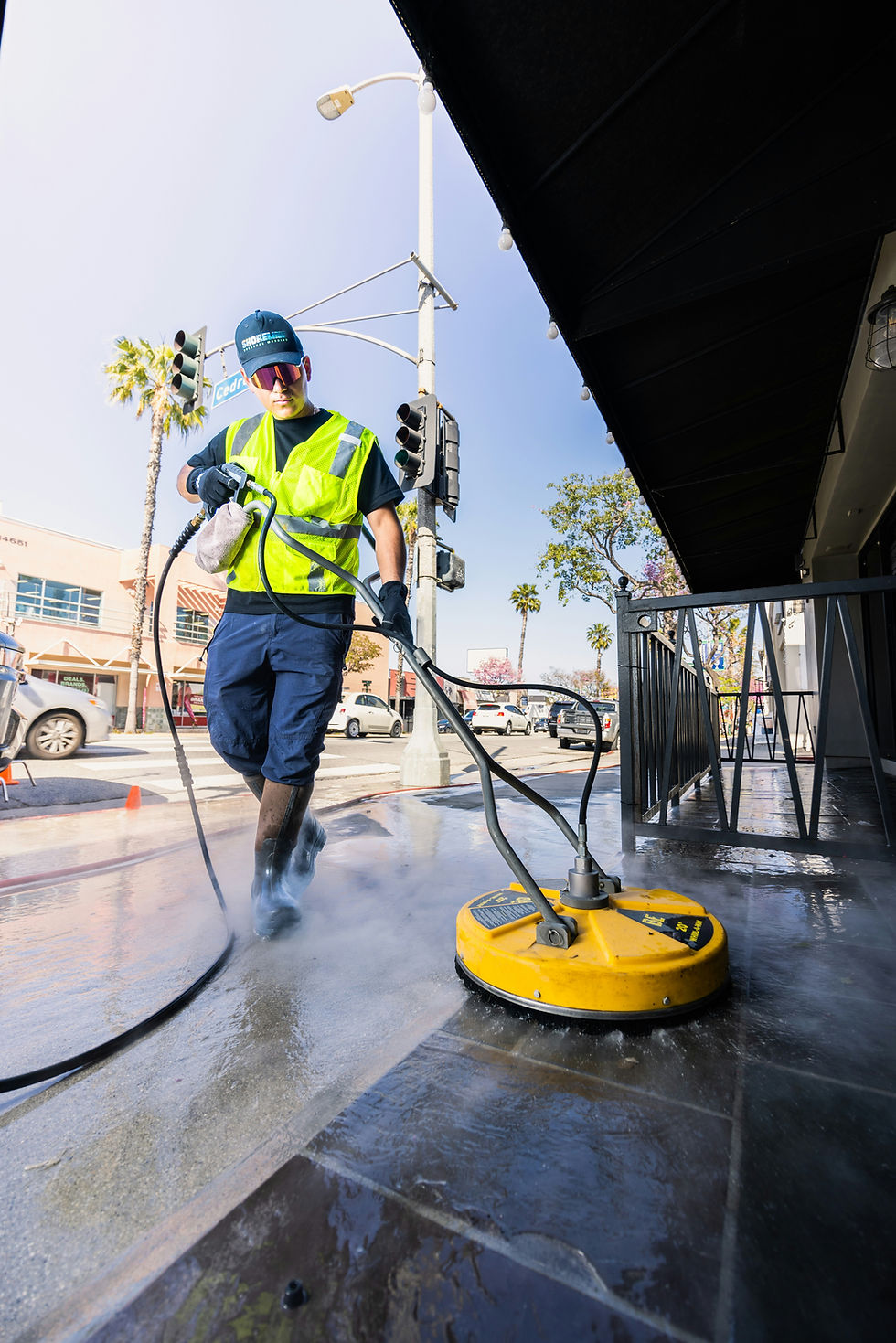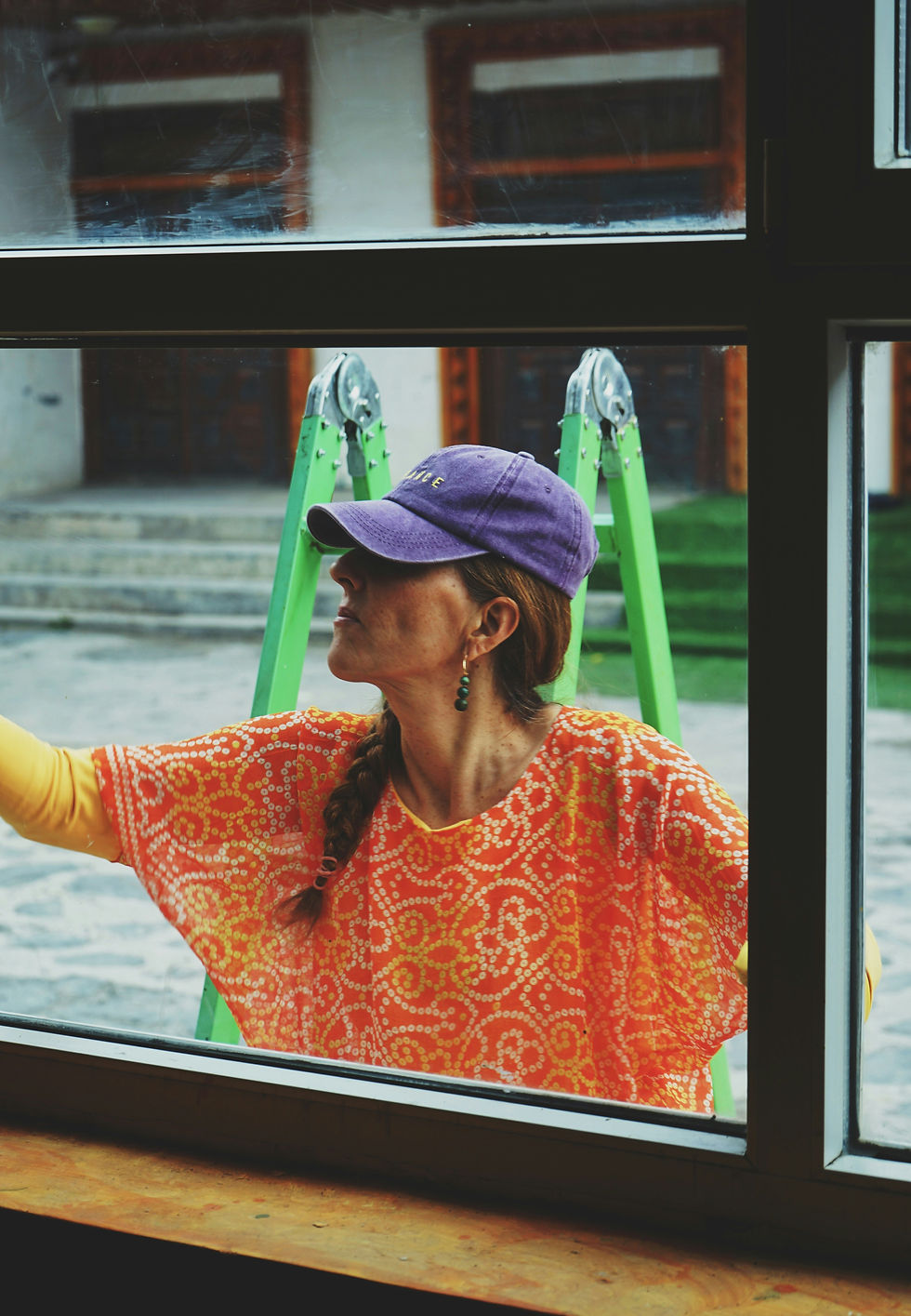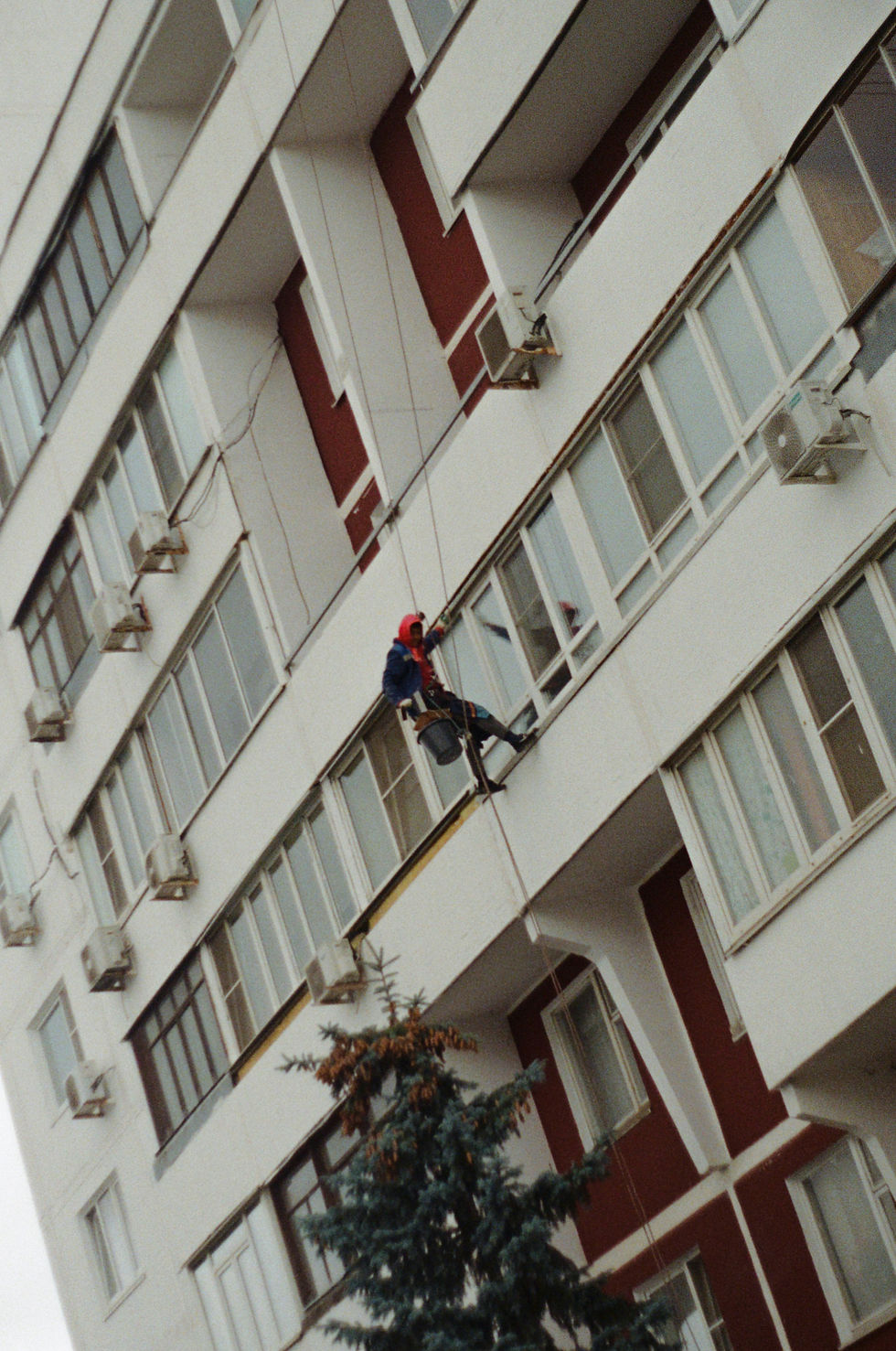What’s the Difference Between Soft Washing and Pressure Washing?
- Thomas Barrie
- Oct 4
- 3 min read
When your home’s exterior starts to look dirty, choosing between soft washing and pressure washing can make a big difference in the results.Both methods clean surfaces effectively, but they use different techniques and tools.Knowing which one fits your needs prevents damage and ensures a longer-lasting clean.
Understanding the Basics of Exterior Cleaning
Exterior cleaning removes dirt, mold, algae, and grime that build up over time.It helps preserve your property’s appearance and prevents surface damage.
Soft washing and pressure washing are the two main cleaning methods used for homes and commercial properties.While both achieve a clean look, the approach and level of force differ significantly.Pressure washing relies on high water pressure to blast away dirt, while soft washing uses gentle pressure combined with cleaning agents.
The right choice depends on the type of surface, the level of buildup, and your maintenance goals.
What Is Pressure Washing?
Pressure washing uses a high-pressure water spray to remove stubborn dirt, grime, and stains from hard surfaces.It’s a fast, effective way to restore driveways, decks, and sidewalks.
How Pressure Washing Works
Pressure washers use a powerful motor to force water through a narrow nozzle at high speed.This creates a concentrated stream strong enough to lift paint, grease, and debris.Most pressure washers can deliver between 1,500 and 4,000 PSI (pounds per square inch).
Because of this strength, pressure washing works best on concrete, brick, and metal surfaces.However, using too much pressure on softer materials can cause cracks, chipping, or water intrusion.
Best Uses for Pressure Washing
Pressure washing is ideal for:
Driveways and sidewalks
Brick walls and patios
Decks with heavy buildup
Outdoor furniture made of metal or stone
It’s not recommended for painted surfaces, siding, or roofing, as the high pressure can strip coatings and cause leaks.
What Is Soft Washing?
Soft washing is a low-pressure cleaning method that uses eco-friendly detergents to remove mold, algae, and mildew.Instead of relying on force, it uses cleaning solutions to break down contaminants safely.
How Soft Washing Works
Soft washing systems spray water at low pressure—usually under 500 PSI—combined with cleaning agents that sanitize surfaces.These solutions kill organic growth at the root, preventing it from returning quickly.
The process involves applying the cleaner, letting it sit for a few minutes, and then rinsing gently with water.This makes it safe for delicate materials like vinyl siding, shingles, and stucco.
Best Uses for Soft Washing
Soft washing is best for:
Roofs and siding
Painted surfaces
Wood fences and decks
Outdoor screens and enclosures
It’s especially useful for removing mold and algae without damaging surfaces or landscaping.
Key Differences Between Soft Washing and Pressure Washing
Feature | Pressure Washing | Soft Washing |
Pressure Level | 1,500–4,000 PSI | Under 500 PSI |
Cleaning Method | Forceful water spray | Chemical-based cleaning |
Best For | Concrete, stone, metal | Roofs, siding, wood |
Risk Level | Can damage soft surfaces | Safe for delicate materials |
Longevity | Cleans surface only | Kills mold and algae at the root |
Pressure washing focuses on surface-level cleaning, while soft washing provides deeper sanitation.The latter often lasts longer because it removes biological growth, not just visible dirt.
Which Method Is Right for You?
Choose pressure washing for hard, durable surfaces that can handle high pressure.It’s the best choice for tough stains on driveways or patios.
Choose soft washing for surfaces that could be damaged by force, like roofs or siding.It’s also ideal if mold and algae are your main problems.
When in doubt, consult a professional cleaning service.They can assess your property’s materials and recommend the safest, most effective method.
Final Thoughts
Soft washing and pressure washing both deliver excellent results when used correctly.The difference lies in how they achieve those results—pressure washing relies on power, while soft washing relies on precision.
Selecting the right method protects your investment, keeps your property looking fresh, and extends the life of your exterior surfaces.

-Photoroom.png)


Comments